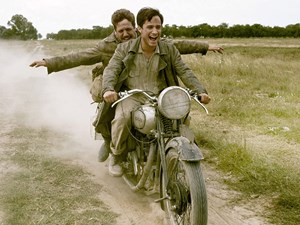True Stories: narrative, music, and neurodiversity
True Stories is a film about a bunch of people in Virgil, Texas. David Byrne’s first and only feature film follows the lead singer of Talking Heads, as he interacts with the members of the fictional town during their preparations for a “Celebration of Specialness”. Featuring karaoke nights, fashion parades, and a talent show, the film provides a window into the lives of the characters who make up the eccentric community.
The characters are based on human interest stories from copies of Weekly World News, which Byrne would collect on tour. The director describes these stories as “mildly funny”, but also “moving”. The film becomes an exploration of what makes people unique, even if these traits could be interpreted as flaws. Characters are treated with sincerity and dignity, in part thanks to stand out performances by John Goodman, Jo Harvey Allen, and Swoosie Kurtz: a woman who is voluntarily bed bound, a man who just wants to find love, and a compulsive liar. However, the celebratory tone and approach to representing uniqueness means it’s no wonder the film appeals to neurodivergent audiences.
The film is centred around the Talking Heads album of the same name, rather than any conventional narrative structure. This gives Byrne space to explore the town’s inner life, painting a vivid picture of Virgil and its members. A sequence that stands out to me is a long shot of a man dancing alone in his office in the dark. We never meet this character, but the scene feels like a moment of pure self-expression. In this sense, the film gives the effect of people watching. The structure gives Byrne space to go on tangents, which elevate the sense of setting and community.
The music of Talking Heads also famously appeals to neurodivergent people, as shown in the recent virality of Stop Making Sense. Many neurodivergent people cite an unexplainable connection with Byrne’s work. In this sense, the heavy featuring of music and dance as a theme throughout is vital to the film’s core message of self-expression. But I feel this is why the film tends to connect to neurodivergent audiences; it’s told through Byrne’s point of view as the “audience in”, and his perspective is one that’s distinctly neurodivergent. His self-diagnosis in his sixties led to a rediscovery of the film, and new readings of the film, attracting new audiences.
I chose to screen this film as a Young Programmer at Showroom, not only because it’s a cult classic and brilliantly made, but because it speaks to me as a young neurodivergent person. The narrative is one of optimism, and finding joy in other people as they are. In this sense, the film is about connection. My aim for the screening is to create a welcoming, community feel, similar to the one represented in the film: a celebration of music, film, and the people around us.


